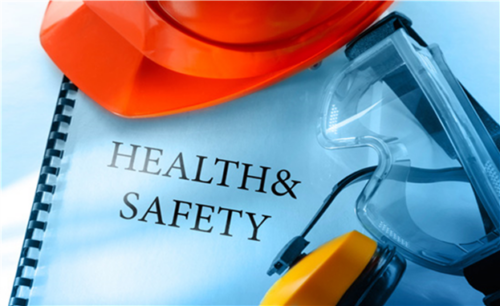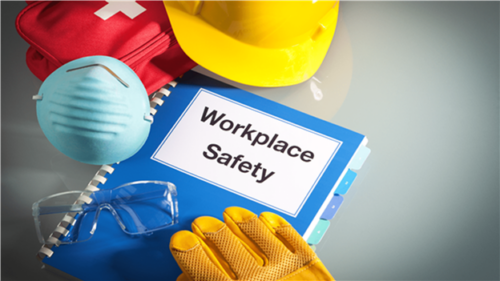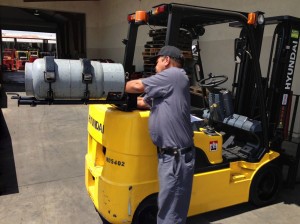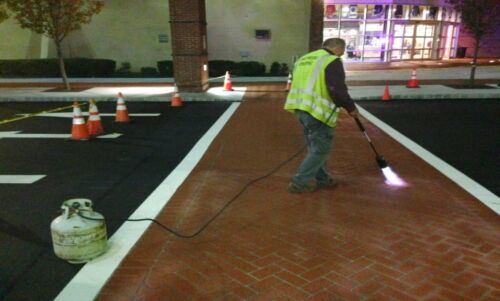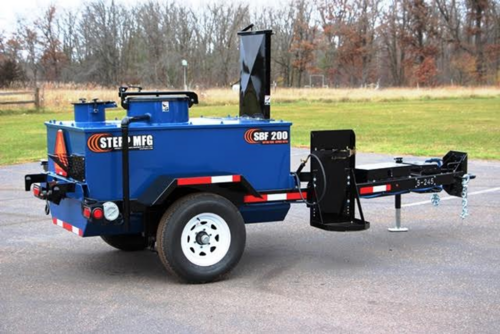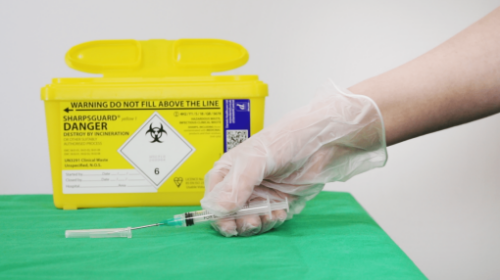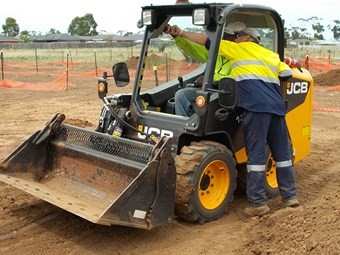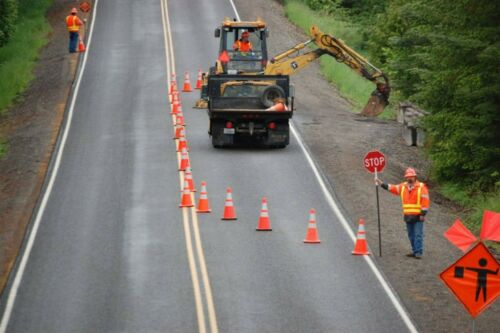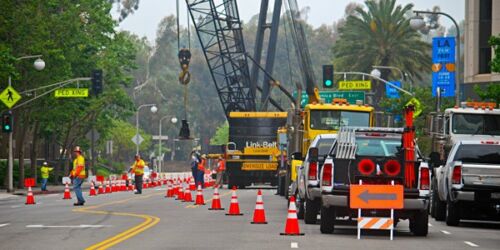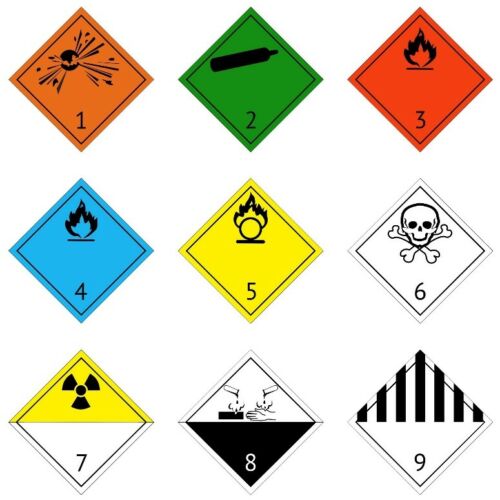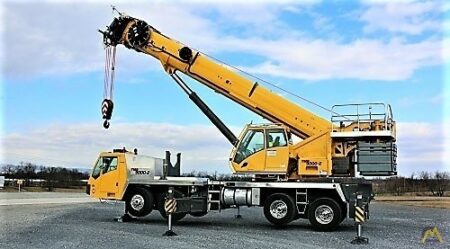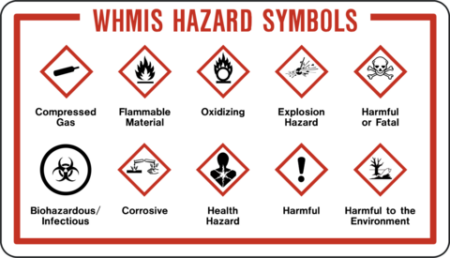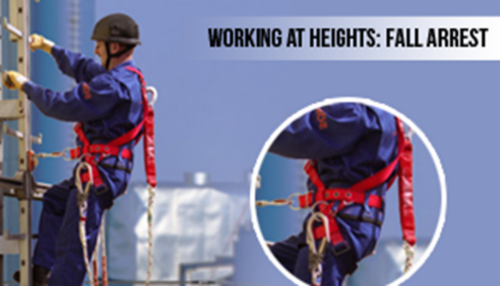 Our Ladder Safety course provides users with the knowledge and understanding of all the different types of “ladders” and how to use the appropriate ladder for a specific task. Nearly 20% of all lost time injuries (time lost for the worker) can be contributed to falls in the workplace. The majority of injuries are same level, others are lower level. Ladders contribute to the more serious injuries or death. In fact, only motor vehicles contribute to a higher risk of workplace validities. You may have never personally experienced a fall but that doesn’t mean that hazards don’t exist; It’s imperative that worker know the hazards working with “ladders” and consistently follows rules and safety work procedures and don’t become another statistic.
Our Ladder Safety course provides users with the knowledge and understanding of all the different types of “ladders” and how to use the appropriate ladder for a specific task. Nearly 20% of all lost time injuries (time lost for the worker) can be contributed to falls in the workplace. The majority of injuries are same level, others are lower level. Ladders contribute to the more serious injuries or death. In fact, only motor vehicles contribute to a higher risk of workplace validities. You may have never personally experienced a fall but that doesn’t mean that hazards don’t exist; It’s imperative that worker know the hazards working with “ladders” and consistently follows rules and safety work procedures and don’t become another statistic. At C&R Safety Training Solutions we offer a certified Power Tool Safety and Hazard Prevention Training. Power tools and equipment, both stationary and portable (hand-held), are commonly used in several industries. We have resources on working safely with many types of power tools, including chainsaws, circular saws, grinders, nail guns, and more.
At C&R Safety Training Solutions we offer a certified Power Tool Safety and Hazard Prevention Training. Power tools and equipment, both stationary and portable (hand-held), are commonly used in several industries. We have resources on working safely with many types of power tools, including chainsaws, circular saws, grinders, nail guns, and more. Our program covers the specific hazards related to the use of propane in everyday use. For example; forklifts, torches, BBQ’s, heaters, small stoves, and much more applications. It provides participants with information on how to safely connect, disconnect, and the activation of propane equipment in the workplace.
Our program covers the specific hazards related to the use of propane in everyday use. For example; forklifts, torches, BBQ’s, heaters, small stoves, and much more applications. It provides participants with information on how to safely connect, disconnect, and the activation of propane equipment in the workplace. Our program covers the specific hazards related to the use of propane in roofing applications. It provides participants with information on how to safely connect, disconnect, and the activation of propane torches and kettles in accordance with Technical Standards and Safety Authority (TSSA) requirements.
Our program covers the specific hazards related to the use of propane in roofing applications. It provides participants with information on how to safely connect, disconnect, and the activation of propane torches and kettles in accordance with Technical Standards and Safety Authority (TSSA) requirements.
Our half-day Scaffolding Safety and Hazard Awareness program is designed to assist those who work on or near scaffolds to understand Ministry of Labour legislation, understand the risks associated with their work, and find out how to manage those risks.
This program will assist participants through a power point presentation and open discussion, case studies as well as an actual incident report, an inspection form requirement, evaluation plan and rescue procedures. Participants will develop a better understanding of their roles and responsibilities according to the OHSA as scaffold users and learn a variety of ways to recognize and control hazards in their work. At C&R Safety Training Solutions we are dedicated to safe workplace injuries and prevention. Our interactive Sharps Training includes a PowerPoint presentation and a hands-on portion for the safe handling of needles, with and without the syringe, e.g. butterfly needles, vacutainer needles, scalpel and razor blades, microscope slides and covers, glass capillary tubes, Pasteur’s pipettes, pipette man tips, sharp, pointy scissors, microtome knives, any broken glass or plastic lab-ware with sharp edges.
At C&R Safety Training Solutions we are dedicated to safe workplace injuries and prevention. Our interactive Sharps Training includes a PowerPoint presentation and a hands-on portion for the safe handling of needles, with and without the syringe, e.g. butterfly needles, vacutainer needles, scalpel and razor blades, microscope slides and covers, glass capillary tubes, Pasteur’s pipettes, pipette man tips, sharp, pointy scissors, microtome knives, any broken glass or plastic lab-ware with sharp edges. Our program is designed for persons operating a skid-steer in the workplace. The training will cover a combination of on-the-job and classroom training. The operator/trainee must pass the classroom training and written test as well as pass a demonstration of skills such as operating the skid-steer on-site demonstrating a pre-equipment inspection, start-up procedures, safe operation, and shut down procedures.
Our program is designed for persons operating a skid-steer in the workplace. The training will cover a combination of on-the-job and classroom training. The operator/trainee must pass the classroom training and written test as well as pass a demonstration of skills such as operating the skid-steer on-site demonstrating a pre-equipment inspection, start-up procedures, safe operation, and shut down procedures.- Sale!
 This program designed to assists those responsible for controlling traffic and creating, implementing, and/or overseeing the safety of the construction zone. Participants are taught safe practices when it comes to controlling vehicles, pedestrians and worker safety.
This program designed to assists those responsible for controlling traffic and creating, implementing, and/or overseeing the safety of the construction zone. Participants are taught safe practices when it comes to controlling vehicles, pedestrians and worker safety. 
 At C&R Safety Training Solutions we are dedicated to safe workplace injuries and prevention. Our interactive Sharps Training includes a PowerPoint presentation and a hands-on portion for the safe handling of needles, with and without the syringe, e.g. butterfly needles, vacutainer needles, scalpel and razor blades, microscope slides and covers, glass capillary tubes, Pasteur’s pipettes, pipette man tips, sharp, pointy scissors, microtome knives, any broken glass or plastic lab-ware with sharp edges.
At C&R Safety Training Solutions we are dedicated to safe workplace injuries and prevention. Our interactive Sharps Training includes a PowerPoint presentation and a hands-on portion for the safe handling of needles, with and without the syringe, e.g. butterfly needles, vacutainer needles, scalpel and razor blades, microscope slides and covers, glass capillary tubes, Pasteur’s pipettes, pipette man tips, sharp, pointy scissors, microtome knives, any broken glass or plastic lab-ware with sharp edges. This program will teach participants their legal responsibilities for safe handling, storing, and transporting of the nine classes of dangerous goods. Participants are provided with an overview of the Dangerous Goods Act and related regulations. The participants will understand their duties and responsibilities according to the Ministry of Transportation Act and Ministry of Labour guidelines. Along with the understanding of UN numbers.
This program will teach participants their legal responsibilities for safe handling, storing, and transporting of the nine classes of dangerous goods. Participants are provided with an overview of the Dangerous Goods Act and related regulations. The participants will understand their duties and responsibilities according to the Ministry of Transportation Act and Ministry of Labour guidelines. Along with the understanding of UN numbers. At C&R Safety Training Solutions, our training program is for persons operating any mobile crane with a lifting capacity of 0 to 8 tons including any of the following crane types: articulating (knuckle) boom, telescoping boom, radial boom derricks (RBDs), sign erectors, or carry deck industrial-type cranes.
At C&R Safety Training Solutions, our training program is for persons operating any mobile crane with a lifting capacity of 0 to 8 tons including any of the following crane types: articulating (knuckle) boom, telescoping boom, radial boom derricks (RBDs), sign erectors, or carry deck industrial-type cranes. Employers have a responsibility to educate workers on the classification system that will be used in their workplace. If products will be classified according to WHMIS – GHS-2015 and new labels and SDSs provided, workers must receive WHMIS – GHS-2015 training. If products will be following WHMIS 1988 requirements, workers must be trained on the 1988 system. In most cases, workplaces will have some products that use the 2015 system and others that use the 1988 system. Those workers should receive training that provides information on both the WHMIS 1988 and the WHMIS – GHS-2015 system. Our WHMIS course has been updated to meet the training requirements needed during the transition period. It educates workers on both the WHMIS 1988 system and the new WHMIS – GHS-2015 system.
Employers have a responsibility to educate workers on the classification system that will be used in their workplace. If products will be classified according to WHMIS – GHS-2015 and new labels and SDSs provided, workers must receive WHMIS – GHS-2015 training. If products will be following WHMIS 1988 requirements, workers must be trained on the 1988 system. In most cases, workplaces will have some products that use the 2015 system and others that use the 1988 system. Those workers should receive training that provides information on both the WHMIS 1988 and the WHMIS – GHS-2015 system. Our WHMIS course has been updated to meet the training requirements needed during the transition period. It educates workers on both the WHMIS 1988 system and the new WHMIS – GHS-2015 system. Our Working at Heights Safety Protection Awareness Program is an approved CPO course and provides our participants with the knowledge and understanding of working at heights basics, system components and protection systems according to the Ministry of Labour Regulations and Standards. Approximately 20% of all lost time injuries can be contributed to falls in the workplace. Most injuries are same level, others are lower level. Ladders contribute to the more serious injuries or death. In fact, only motor vehicles contribute to a higher risk of workplace fatalities. You may have never personally experienced a fall to a lower level but that doesn’t mean that hazards don’t exist; less frequent hazards mean hazard is hidden and makes it more dangerous. It’s imperative that workers understand the hazards involved when working at heights and consistently follow the rules and safety work procedures.
Our Working at Heights Safety Protection Awareness Program is an approved CPO course and provides our participants with the knowledge and understanding of working at heights basics, system components and protection systems according to the Ministry of Labour Regulations and Standards. Approximately 20% of all lost time injuries can be contributed to falls in the workplace. Most injuries are same level, others are lower level. Ladders contribute to the more serious injuries or death. In fact, only motor vehicles contribute to a higher risk of workplace fatalities. You may have never personally experienced a fall to a lower level but that doesn’t mean that hazards don’t exist; less frequent hazards mean hazard is hidden and makes it more dangerous. It’s imperative that workers understand the hazards involved when working at heights and consistently follow the rules and safety work procedures.


